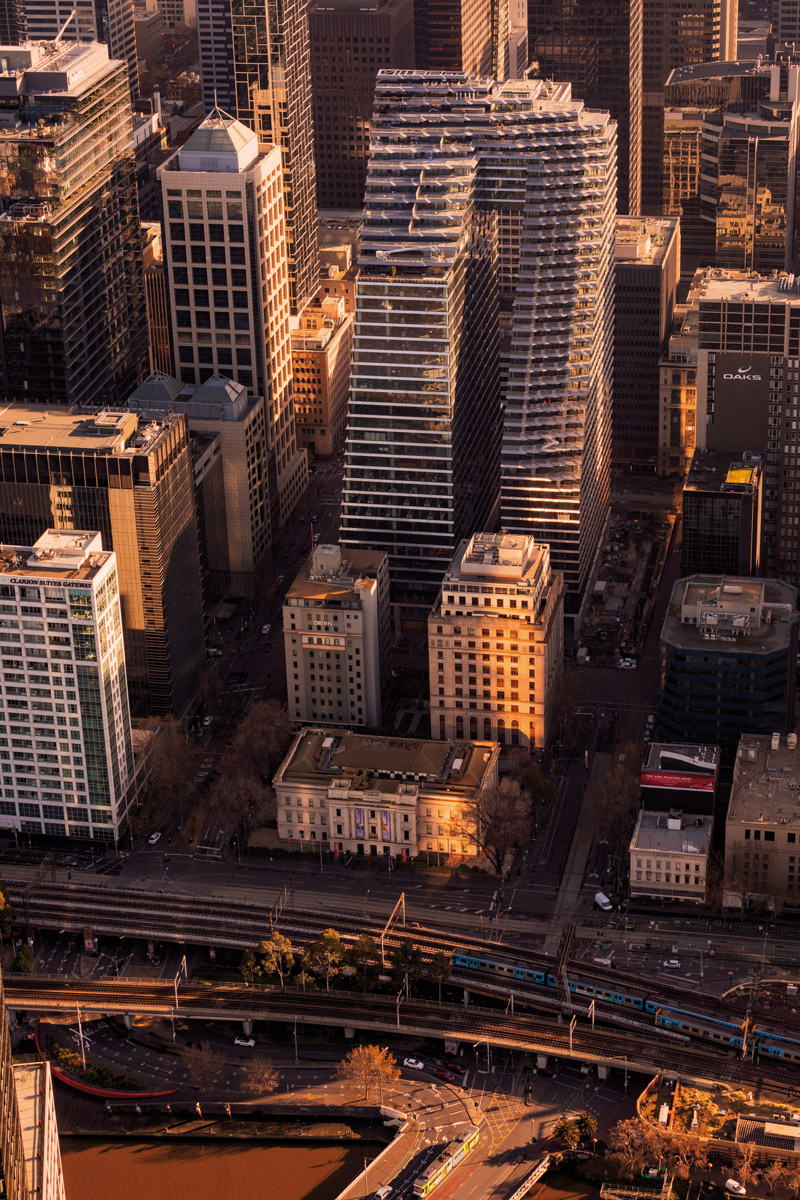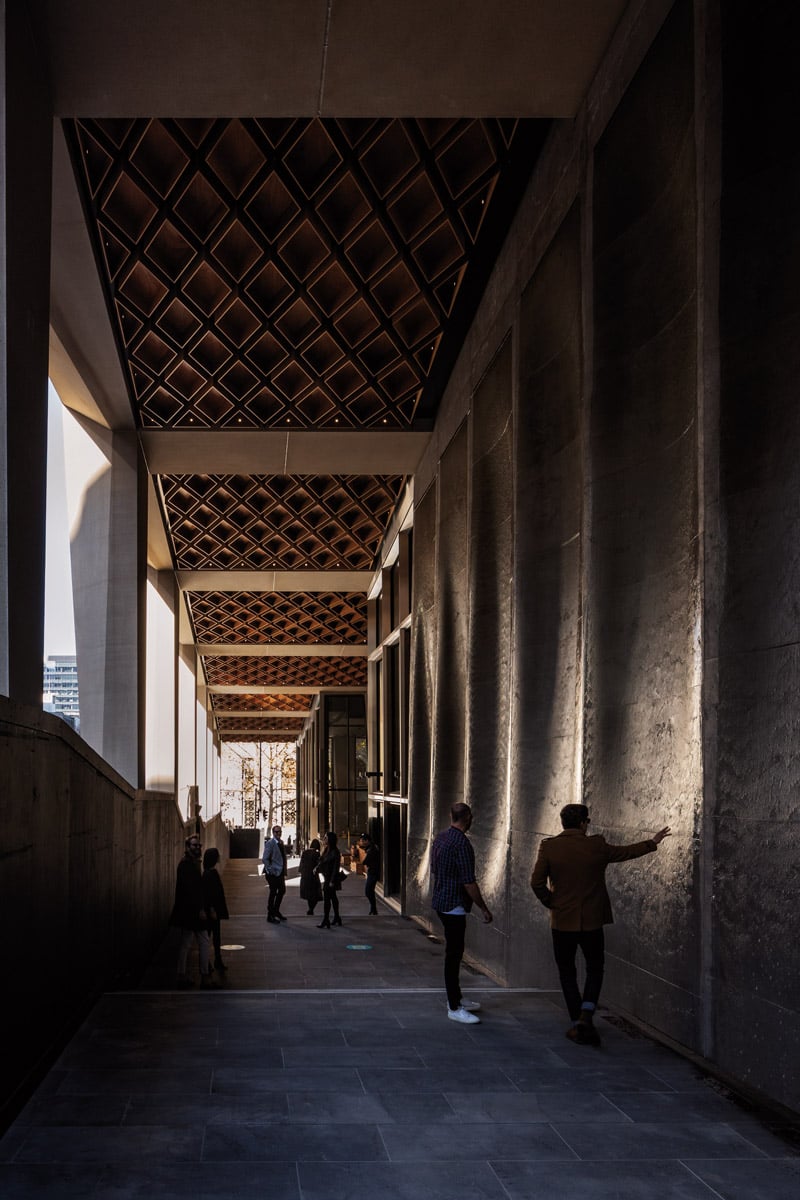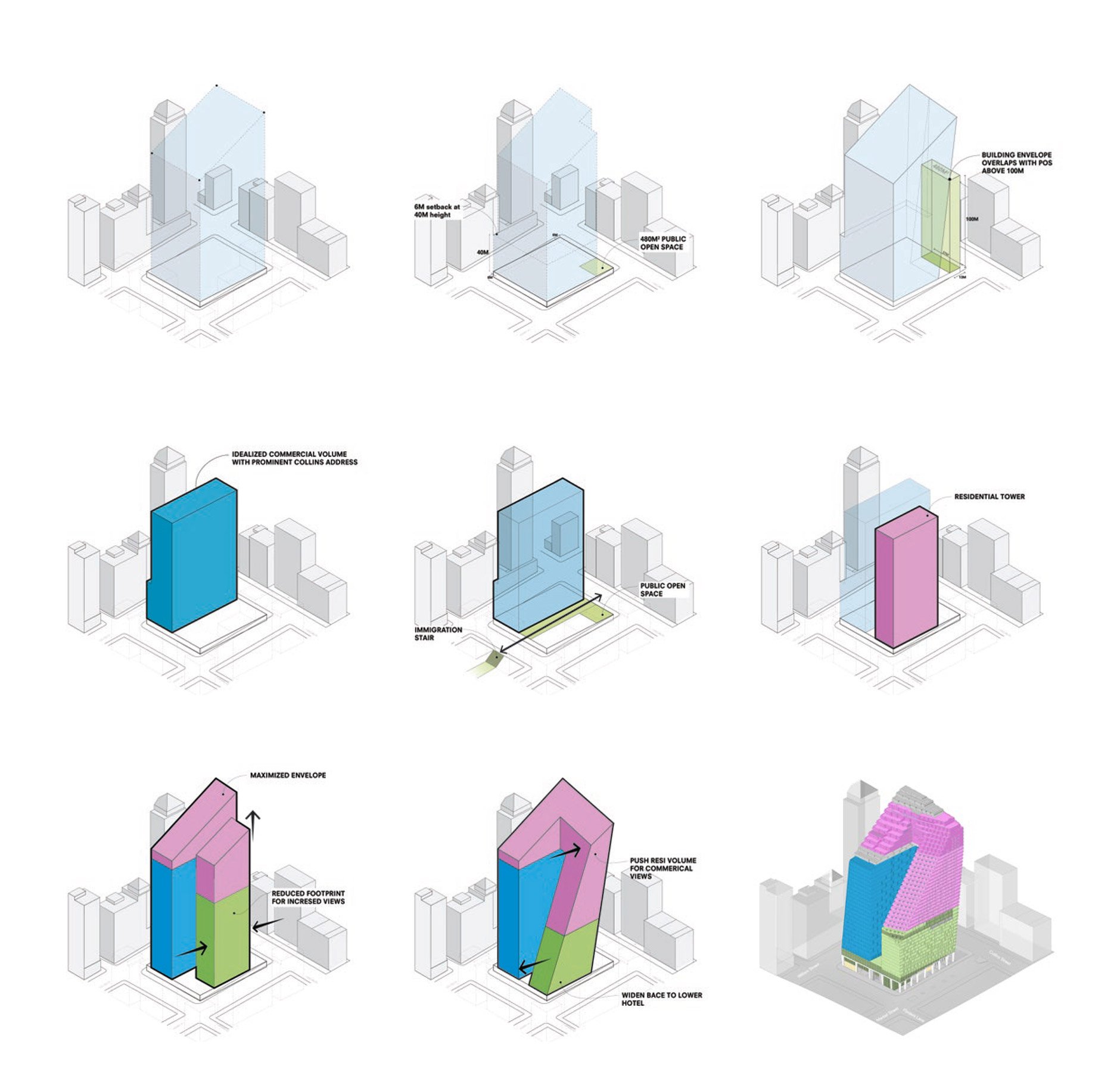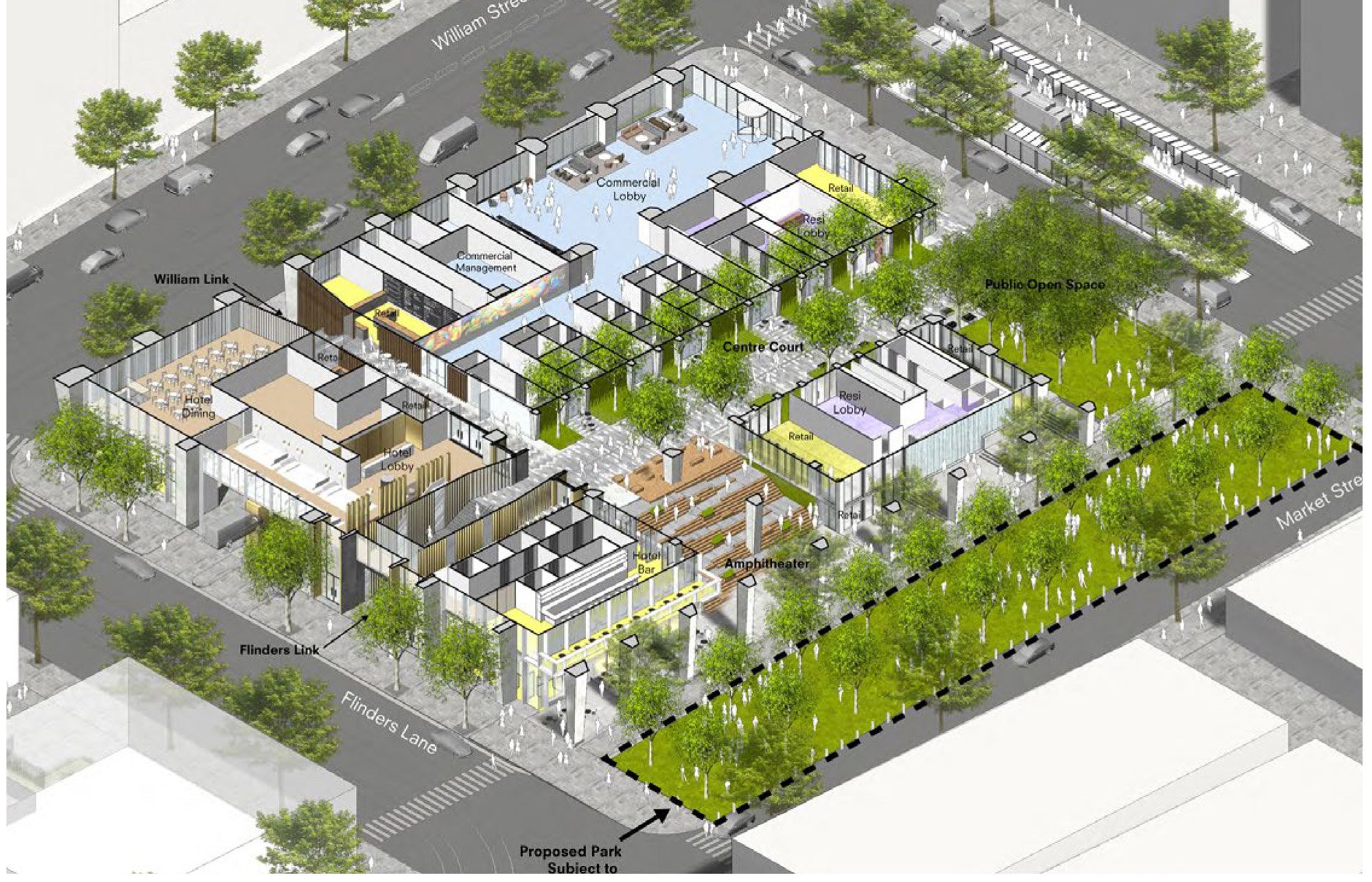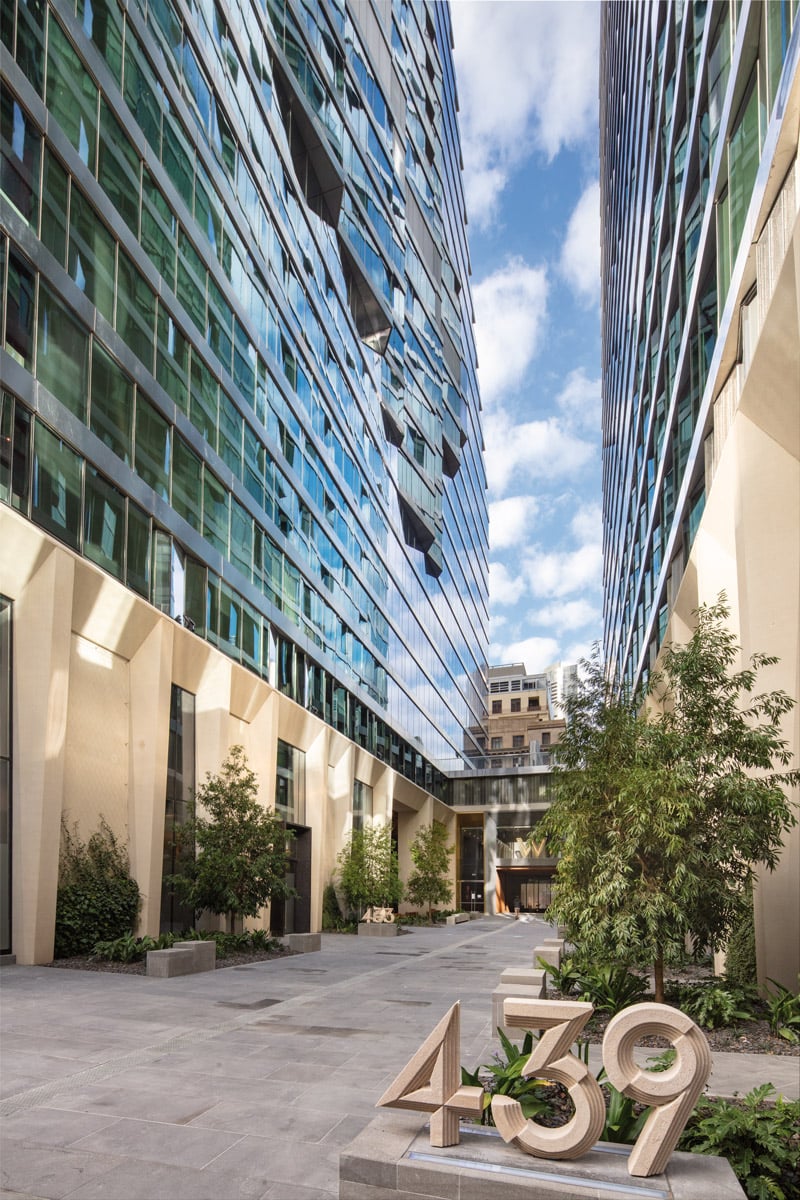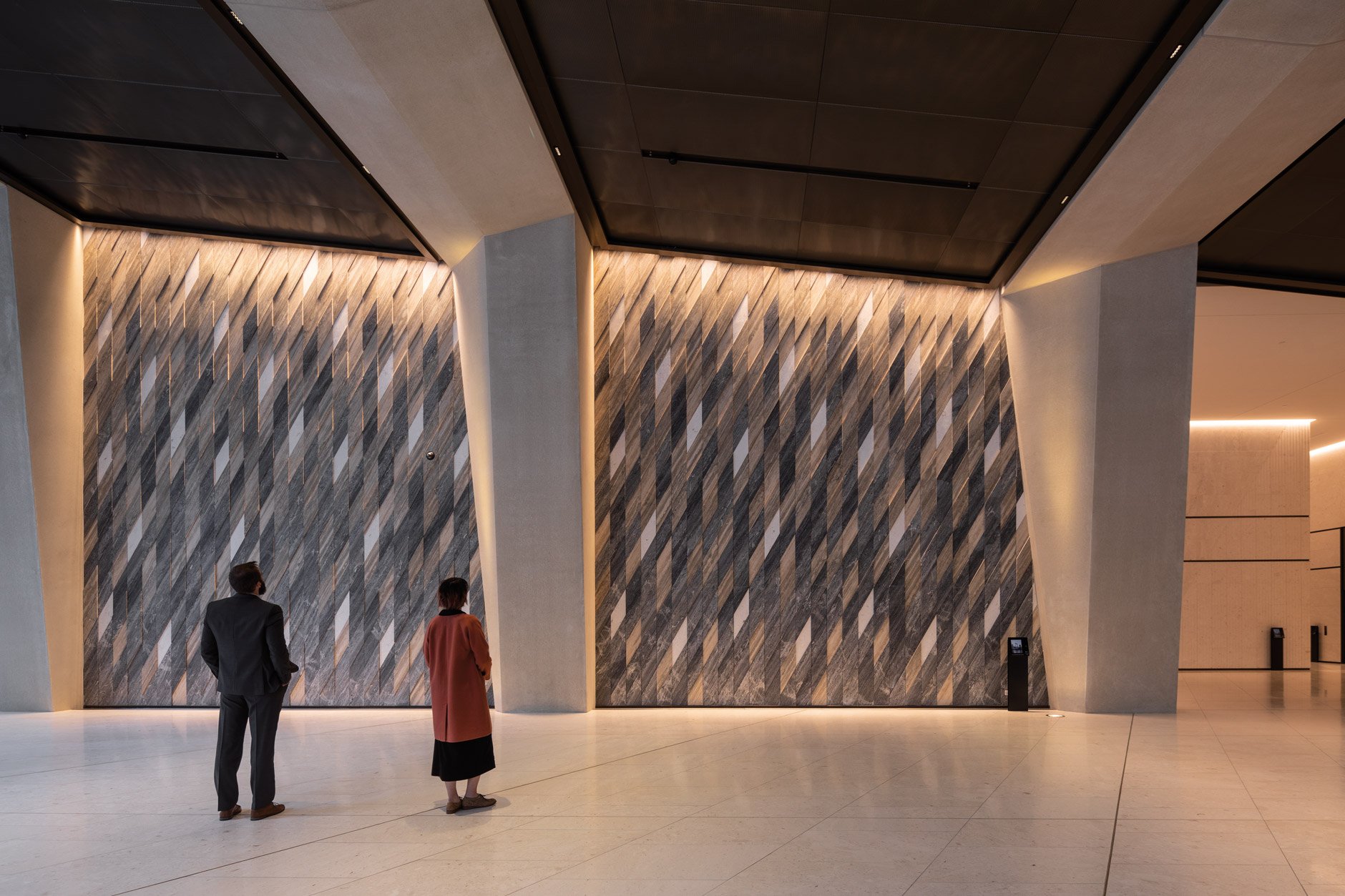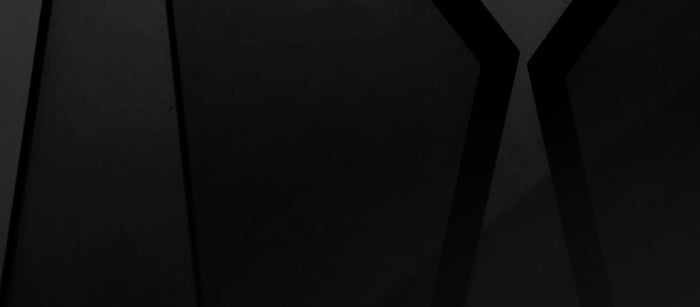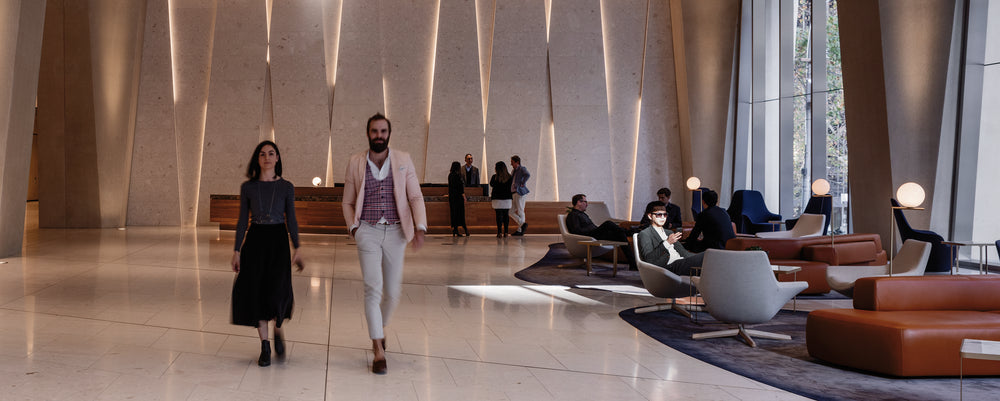
Designed by Woods Bagot and SHoP Architects, Collins Arch is one of Melbourne’s largest mixed-use skyscrapers filling a whole city block in the central business district and connecting the heart of the city to the Yarra River. The winning scheme for a competition initiated by developer Cbus Property in 2014, Collins Arch explores a fine-grain approach in all aspects of its design, offering a benchmark for engaging community within the city.
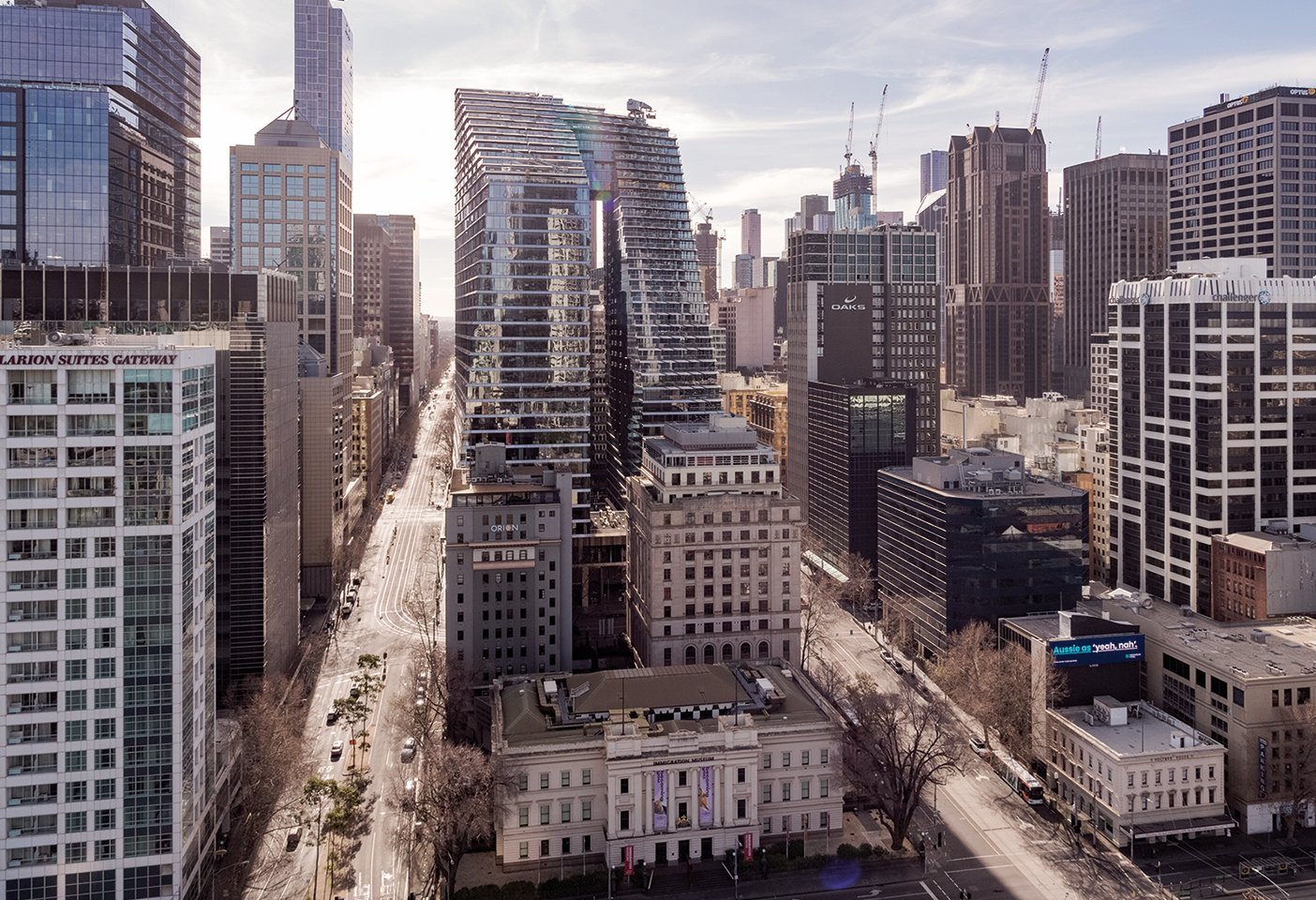
Like buildings in New York and Tokyo, Collins Arch in Melbourne integrates mixed-use with a fine-grain approach. Photography © Trevor Mein.
-3-v1622529245916.jpg)
The commercial tower lobby with its expressive concrete form, and furniture by B&B Italia including the Harbor and Metropolitan armchairs. Photography © Trevor Mein.
More Space: Kate, can you describe the area of Melbourne where Collins Arch is located and the intitial design approach?
Kate Frear: It was an area of the city that was a nine-to-five destination and it didn't have much life outside weekday working hours. The Melbourne City Council has done a lot of work, but it does take the injection of this type of development to really reinvigorate things. Collins Arch is a mixed-use development of over 6,000 square metres, an entire city island block that is very different to a commercial insertion. Here, the integration of the residential tower and the W Hotel give it an intensive human experience on the ground plane which was important to the developer Cbus. I think the other thing that Cbus was really keen to do was to bring this part of the city, and certainly Collins Street which is a premier address, back to a five-star premium-grade commercial address which it has done. Along with the new Olderfleet building down the road, Collins Arch has changed the fabric of the city.
"The design went through a number of iterations from the competition entry but the approach was always about maintaining that open public link to give back to the city."
Kate Frear, Director, Woods Bagot
"We can now see that buildings need to be far more fine-grained and it’s not just a singular programmatic gesture anymore."
Kate Frear, Director, Woods Bagot
What were some of the early design decisions for activating those connections?
Our initial investigation into the building design and the surrounding urban spaces was to make sure that the ground plane was activated and the laneway experience migrated into the site. The design went through a number of iterations from the competition entry but the approach was always about maintaining that open public link to give back to the city. Now, the north-south and east-west links give people a way through from the heart of the city, to Bourke Street and beyond in one direction, and connecting with the Immigration Museum, down through to the Yarra River in the other. Setting up design principles that were robust enough to carry through the entire design journey was key to the success of the project.
That's interesting, it’s also turning the laneway experience on its head. Melbourne does laneways well.
Cbus was a little uncomfortable about the laneway typology because in Melbourne they are fairly gritty. Although they are exciting places with surprises and unexpected experiences, we had in mind secondary streets like Flinders Lane, Little Collins Street and Little Bourke Street, where you get tighter proportional spaces and a more intense retail experience. We talked a lot about the types of spaces where people feel protected and will linger. The amphitheatre is now a place where people rest and dwell under the roof and there’s the colonnade that runs down Market Street which has a European street experience. It is a really big building so getting the human scale on the ground plane was very important.
What are some of the key design interventions?
Some of the things that we felt were going to be super important are the gestures we talked about in terms of the great walk and the ability to feel like you're connected with the retail, the apartments and the hotel moving through and around the city. The new Market Street Park was an initiative that Cbus took with the Melbourne City Council to give back half the street to public open space. Whilst we knew it was a really important design gesture at the time, I don't think any of us could have understood how people would use it throughout the day. It’s so interesting to see the mix of residents, guests from the hotel and skateboarders weaving in and around people walking seriously to work. There is a really beautiful tapestry of different things happening at a very human scale. All of the elements, from the walkway, grassed areas, amphitheatre and covered spaces, contribute to a place where people feel comfortable together. I was there the other day and people have started to inhabit the place and you can see different communities coming and sharing the space with one another. I think that’s a real point of success.
The mixed-use nature of the project is interesting, not unlike what you would find in a city like Tokyo...
We can now see that buildings need to be far more fine-grained and it’s not just a singular programmatic gesture anymore. With this site, one of the opportunities was to create a large floor plate for major tenants, then place the apartments on top of that. We tapered the building and the floor plates in the commercial tower so that we could align them with the sorts of dimensions that would be appropriate for residential living above and natural light.
The fine-grain detailing you describe is evident throughout the interior too, even down to the furniture selection.
We designed the larger commercial lobby, the east and west residential lobbies, as well as the residential amenity floor on level 34. It was important that we designed the lobbies, especially for the residential building, because it's the first signifier that you're home so we wanted to make sure that it started the narrative as soon as you opened the front door.
That narrative also comes across in the way those spaces and materials are formed and finished. Now complete, how does the building feel?
Materiality and tactility were very important and the building's sandblasted concrete structure expresses the warmth of sandstone buildings that surround the island site. The building needs extraordinary structure to land but we wanted to make sure that it was as fine as possible. The sculptural form and the tapering of the columns were important gestures to optimise the human experience so you don't feel like you are underneath a very heavy building. And at the top of the building, there's a huge plane tree growing in the open-air sky garden that sits centrally over the top of the arch, it’s a beautiful, quiet place for residents with amazing views.
Thanks so much for speaking with us Kate.
Kate Frear is a director at Wood Bagot and was the principle in charge of the Collins Arch project, designed in partnership with SHoP Architects and developed by Cbus Property. Space Furniture worked with the Woods Bagot team on the selection of B&B Italia's Harbor and Metropolitan armchairs for the commerical tower lobby.
B&B Italia is available exclusively in South East Asia from Space – Singapore and Kuala Lumpur. and Space – Australia.
